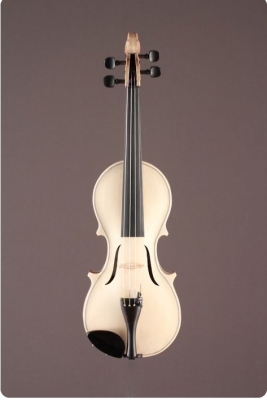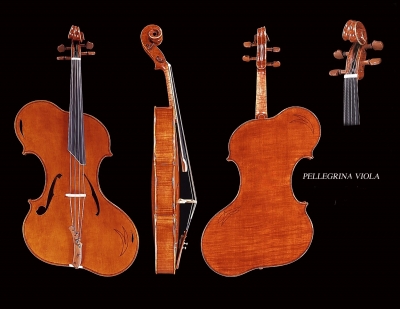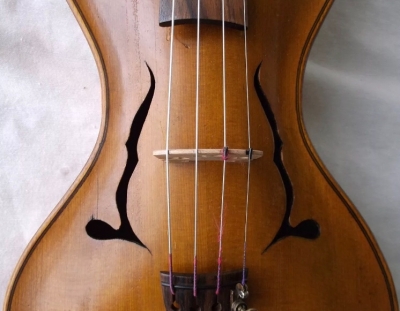Welcome to our forum. A Message To Our New and Prospective Members . Check out our Forum Rules. Lets keep this forum an enjoyable place to visit.
Currently working on errors from the latest (SimplePress) forum update. Many issues have been resoled and others are being worked on. Thank you for your patience.
 Topic RSS
Topic RSS



 (0 votes)
(0 votes) Regulars
 Offline
Offline

The original utility of Violin plate purfling was to stop the extension of cracks. Since the plate extends below the purfling groove, it would seem to me ill suited for this purpose. It would make more sense to have a plastic material on the exterior of the plate, such as on a guitar or mandolin, to act as a shock cushion.
I have seen plenty of violins with cracks that also had purfling. Would there be a larger percentage of cracked with painted purfling? Unless all cracks start at the perimeter of the plate, the few millimeters of additional crack “saved” by the purfling does not seem to be worth the effort of its initial installation.
Would anyone purposely avoid the purchase of an otherwise worthy Violin because of its lack of authentic purfling?
Success is the progressive realisation of a worthy ideal. —Earl Nightingale.
Regulars
 Offline
Offline


Irv said
The original utility of Violin plate purfling was to stop the extension of cracks. Since the plate extends below the purfling groove, it would seem to me ill suited for this purpose. It would make more sense to have a plastic material on the exterior of the plate, such as on a guitar or mandolin, to act as a shock cushion.
C'mon, Irv, you know that most violin makers and buyers are in love with tradition. I don't think the (plastic) binding used on other string instruments is going to make its appearance on violins any time soon.
Also, here's another tidbit about the function of purfling:
The channel cut for the inlay of purfling may increase the flexibility of the plates where they join the sides, affecting an instrument's pitch and sustain.
Regulars
 Offline
Offline
Regulars
 Offline
Offline
Regulars
 Offline
Offline

I find it rather amazing that the purfling pattern remained so consistent down the centuries, particularly the “bee stings” at the corners of the c bouts. I have searched for a violin that had purfling that just followed the perimeter hollow around the plate, which seems logical to me and should be easier to do, but I have not found one yet.
Success is the progressive realisation of a worthy ideal. —Earl Nightingale.
Regulars
 Offline
Offline

Regulars
 Offline
Offline




Regulars
 Offline
Offline

Regulars







For something really unusual, take a look at a Rivinus asymmetrical viola. A violist in one of my orchestras plays one. Yes, there are two extra little holes.
Regulars
 Online
Online





Regulars
 Offline
Offline

Hi Gordon and others. The interior surfaces of the violin corpus is left unvarnished, so obviously moisture can migrate there. I believe that the only benefits of purfling is to prevent furthering a crack (much the same as positioning a hole in a cast iron surface to stop a crack), and aesthetics. Since the plates are only channeled about 1/3rd of their depth for the purfling, I don’t see much of a mechanical argument for its merit as a crack stopper.
On my above examples of strange violins, you will see many sharp corners. This, in my opinion, is bad design because corners induce stress and lead to cracks.
Success is the progressive realisation of a worthy ideal. —Earl Nightingale.
Regulars
 Offline
Offline
Regulars
 Offline
Offline

Regulars
 Offline
Offline

Regulars
 Offline
Offline


Now you've piqued my curiosity! These cut-away or slenderized violas seem like a terrific workaround for people seeking to maximize the size of a viola they can handle while facilitating ease of handling. Looks like the Sabatier violas are commercially available in the intermediate price range.
I also stumbled across this form originally designed by Otto Erdesz.
Regulars
 Offline
Offline

Hi @bocaholly and others. The Erdesz advantage is finger position in the upper positions. The Rivinus and Sabatier have this also, but have a lot of air volume on the bass side of the corpus. The Rivinus has a much smaller tailpiece than the Sabatier, so it has a longer after string length and can utilize a longer string (an advantage on the c string in the smaller sizes).
It looks like the Sabatier are now made in China and are shipped in the white to France for finishing. There is an interesting video on YouTube interviewing Sabatier and his detractors on this instrument (fortunately, a version exists with English subtitles).
I am putting in a call to the Canadian distributor of the Sabatier violin to see if special string sets are required. I bet they use tungsten wrapping and have a high tension.
Success is the progressive realisation of a worthy ideal. —Earl Nightingale.


 Log In
Log In Register
Register


















 .
.





